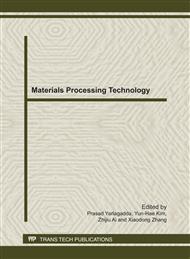p.255
p.262
p.266
p.270
p.274
p.281
p.285
p.289
p.294
Integrative Technology Evaluation Model (ITEM) for Selective Laser Melting (SLM)
Abstract:
This paper focuses on the evaluation of manufacturing processes that are competing with Selective Laser Melting (SLM). In 3D-part production of serial parts SLM is starting to be an economic choice for manufacturing. An integrated technology evaluation model (ITEM) is presented that helps decision makers to determine the potential of SLM while comparing with conventional manufacturing technologies. In contrast to conventional evaluation methodologies the ITEM considers interactions between product and process innovations generated by SLM. The paper closes with a technical and economical evaluation of a test part from Festo AG to validate two important parts of the ITEM.
Info:
Periodical:
Pages:
274-280
Citation:
Online since:
September 2011
Keywords:
Price:
Сopyright:
© 2011 Trans Tech Publications Ltd. All Rights Reserved
Share:
Citation:


